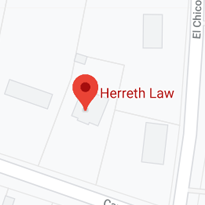 Mostly due to better injury diagnosis and treatment, the average dog bite claim has increased 94 percent since 2003.
Mostly due to better injury diagnosis and treatment, the average dog bite claim has increased 94 percent since 2003.
Generally, animal attacks cause a wide array of physical injuries. Especially if the victim is a child, the knockdown usually causes head injuries and broken bones. Then, when dogs bite, they inflict both deep puncture wounds and savage tearing wounds. The puncture wounds often pierce internal organs and the tearing wounds usually require extensive surgical correction.
There are emotional injuries as well. Many dog bite victims suffer from Post Traumatic Stress Disorder-type symptoms for several months after the attack.
A Fort Worth personal injury attorney can obtain needed financial compensation in these cases. So, victims have the resources they need to overcome their injuries. Perhaps more importantly, the settlement also gives the victim some closure and stiffens the resolve to move on.
Scienter
Texas still uses the one-bite rule. Scienter is Latin for “knowledge,” and scienter is a form of negligence. Essentially, if the owner knew the animal was potentially dangerous and the animal attacked someone, the owner could be liable for damages. Evidence of knowledge includes:
-
Prior attacks,
-
Lunging,
-
Baring of teeth, and
-
Aggressive barking.
Note that the owner might have learned about the dog’s vicious tendencies in the months before the attack or in the moments before the attack.
The provocation defense is very common in scienter cases. But in this context, provocation means more than sudden moves or even aggressive teasing. Victims only provoke dogs if they physically torture them, in most cases.
To obtain compensation, the victim/plaintiff must establish knowledge by a preponderance of the evidence (more likely than not).
Failure to Stop Attack
The one-bite rule is common in many states, but the failure rule is unique to Texas law. If the owner fails to stop an attack in progress, the owner may be liable for damages. This doctrine is separate from the scienter doctrine. So, if the owner failed to stop an attack, the victim/plaintiff need not prove knowledge of viciousness.
Typically, the insurance company argues that the attack happened so fast the owner could not prevent it. However, a well-trained animal usually responds to verbal commands like “stop” or “heel.”
Negligence Per Se
Weatherford and most other municipalities have very strict animal restraint ordinances. These measures usually include leash laws and fence laws. If the owner violates such a law, and that violation substantially causes injury, the owner may be liable for damages as a matter of law.
In negligence per se cases, many owners argue that they did not know about the dangerous property condition. But circumstantial evidence is admissible on this point. So, even if there is no “smoking gun,” liability may still attach.
Dog bite victims have several legal options. For a free consultation with an experienced personal injury attorney in Fort Worth, contact Herreth Law. You have a limited amount of time to act.

